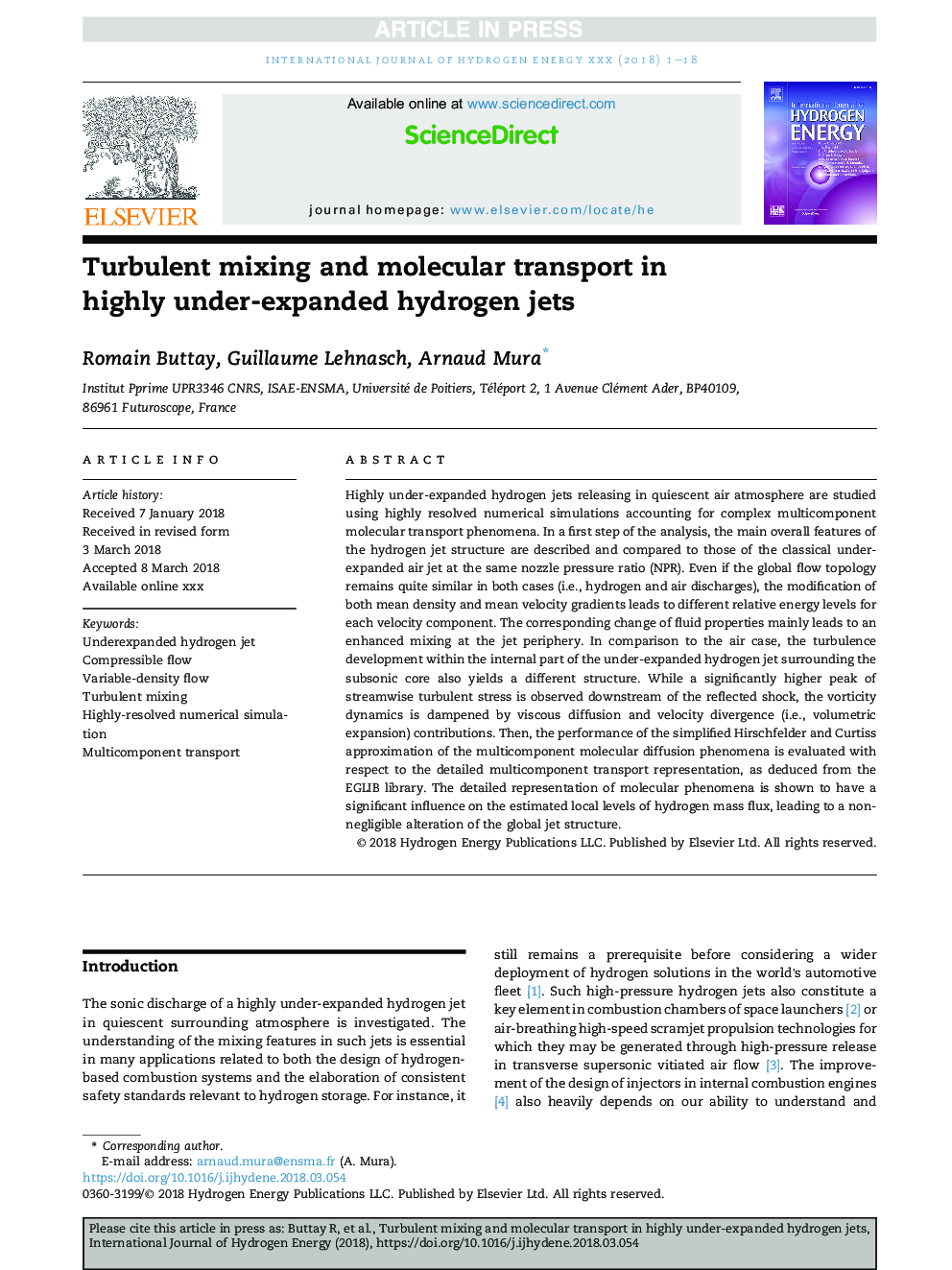| Article ID | Journal | Published Year | Pages | File Type |
|---|---|---|---|---|
| 7706318 | International Journal of Hydrogen Energy | 2018 | 18 Pages |
Abstract
Highly under-expanded hydrogen jets releasing in quiescent air atmosphere are studied using highly resolved numerical simulations accounting for complex multicomponent molecular transport phenomena. In a first step of the analysis, the main overall features of the hydrogen jet structure are described and compared to those of the classical under-expanded air jet at the same nozzle pressure ratio (NPR). Even if the global flow topology remains quite similar in both cases (i.e., hydrogen and air discharges), the modification of both mean density and mean velocity gradients leads to different relative energy levels for each velocity component. The corresponding change of fluid properties mainly leads to an enhanced mixing at the jet periphery. In comparison to the air case, the turbulence development within the internal part of the under-expanded hydrogen jet surrounding the subsonic core also yields a different structure. While a significantly higher peak of streamwise turbulent stress is observed downstream of the reflected shock, the vorticity dynamics is dampened by viscous diffusion and velocity divergence (i.e., volumetric expansion) contributions. Then, the performance of the simplified Hirschfelder and Curtiss approximation of the multicomponent molecular diffusion phenomena is evaluated with respect to the detailed multicomponent transport representation, as deduced from the EGLIB library. The detailed representation of molecular phenomena is shown to have a significant influence on the estimated local levels of hydrogen mass flux, leading to a non-negligible alteration of the global jet structure.
Related Topics
Physical Sciences and Engineering
Chemistry
Electrochemistry
Authors
Romain Buttay, Guillaume Lehnasch, Arnaud Mura,
